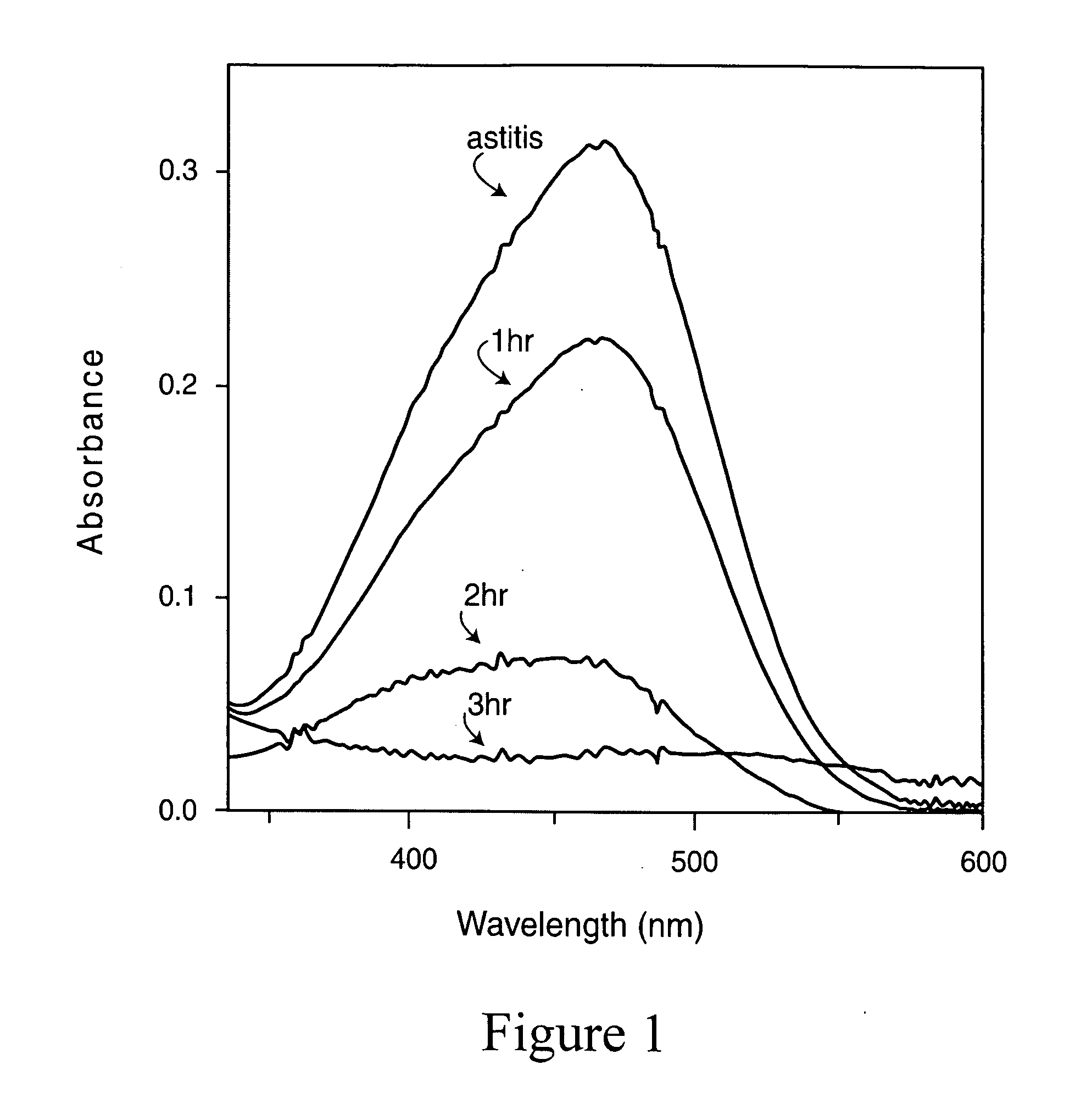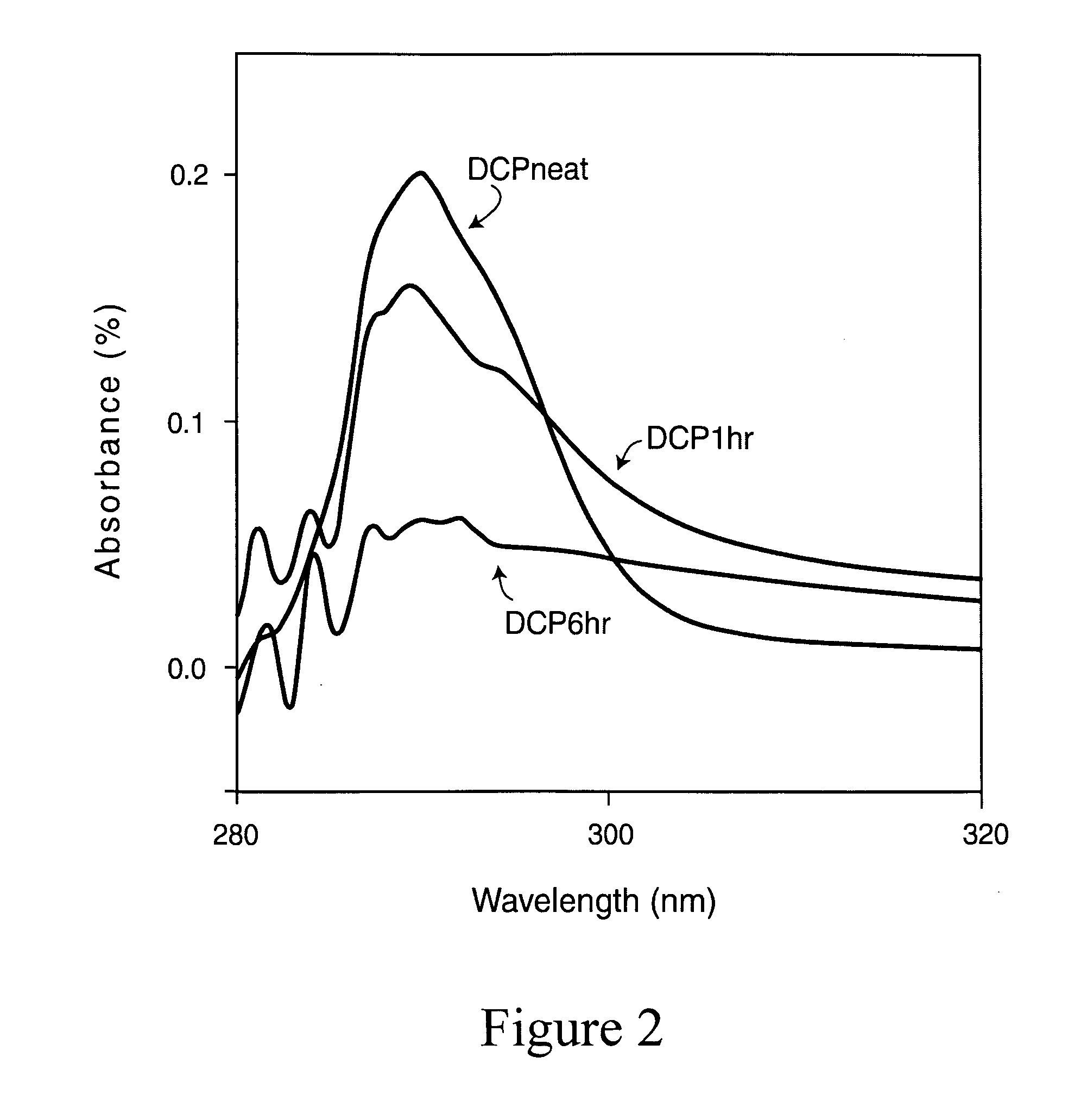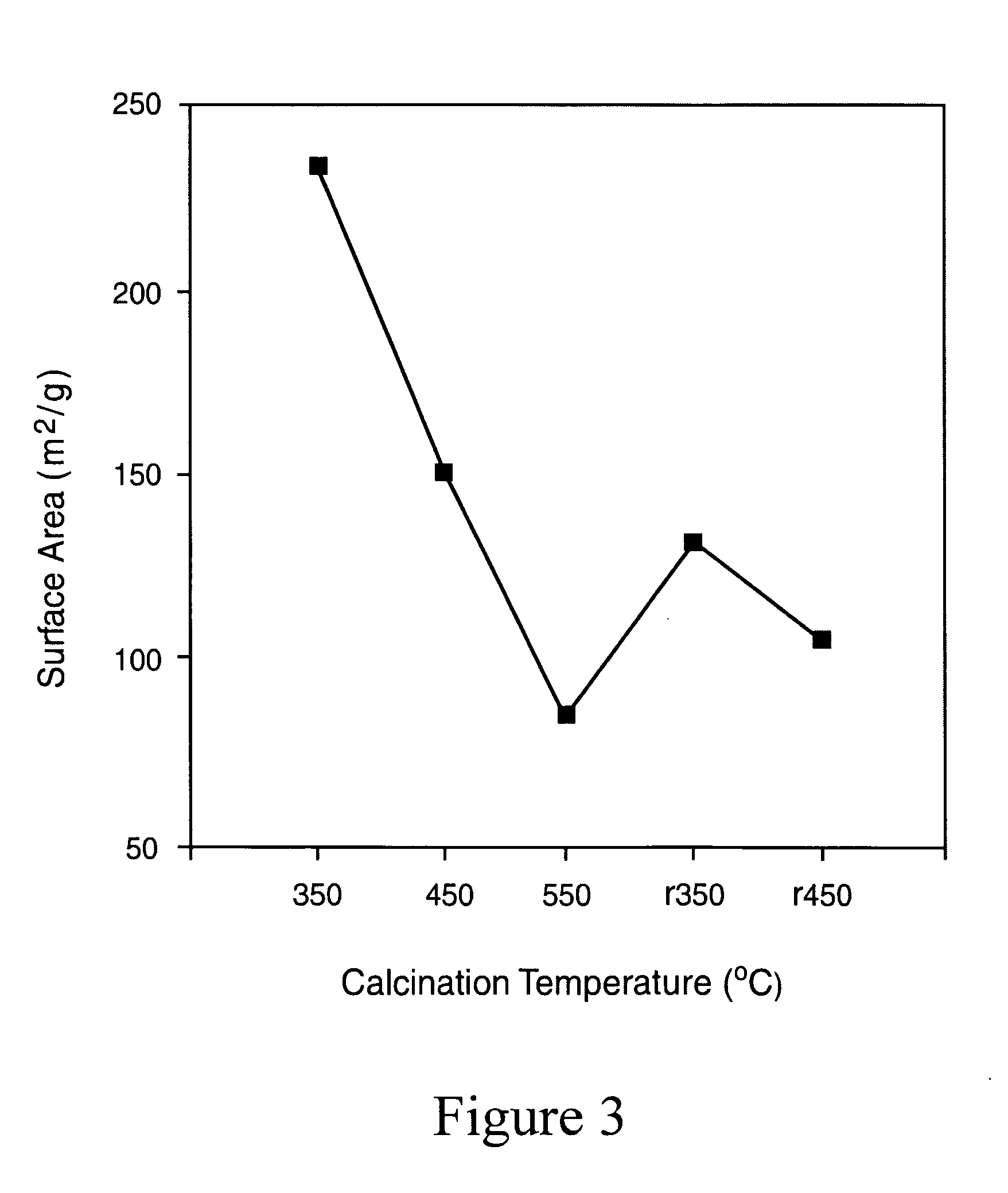Doped titanium dioxide as a visible and sun light photo catalyst
a titanium dioxide and visible light technology, applied in the direction of catalyst regeneration/reactivation, organic compound/hydride/coordination complex catalyst, physical/chemical process catalyst, etc., can solve the problem of reducing the uv range of photocatalytic activity of the catalyst, reducing the stability and efficiency of the catalyst, and not being able to prevent the rapid loss of photocatalytic activity. the effect of stability and reactivity
- Summary
- Abstract
- Description
- Claims
- Application Information
AI Technical Summary
Benefits of technology
Problems solved by technology
Method used
Image
Examples
example 1
Synthesis of a Titanium Dioxide Photocatalyst Using Guanidine Nitrate
[0103]20 g of TiCl4 (digested to 50% in HCl) was added to 1000 mL of water. 80 g of guanidine nitrate was added in to this solution under magnetic stirring. The resulting mixture was then heated to 100° C. Development of white color is observed within an hour. The reaction was continued at that temperature for 24 h. After the reaction was cooled to room temperature, centrifuged, and washed with water three times to remove the chlorides and any other water-soluble reactants. The product was then dried at 60° C. overnight, powdered and calcined at temperatures 350, and 450° C. for 2 h (named as Ti R350, TiR450) to obtain the final yellow colored products.
example 2
Alternative Synthesis of a Titanium Dioxide Photocatalyst Using Guanidine Nitrate
[0104]20 g of TiCl4 (digested to 50% in HCl) was added to 1000 mL of water. 80 g of guanidine nitrate was then added to the solution and magnetically stirred for 30 minutes. Ammonium hydroxide solution was then added to bring the pH of the solution to 9. The reaction was continued at room temperature for 24 h. The ensuing precipitate was then centrifuged, washed with water three times to remove the chlorides and any other water-soluble reactants. The product was then dried at 60° C. overnight, powdered, and calcined at temperatures 350, 450 and 550° C. for 2 h (Ti350, Ti450, Ti550) to obtain the final bright yellow colored products.
example 3
Analysis of the Effectiveness of the Catalyst by Degradation of Methyl Orange (MO) Dye
[0105]The degradation of MO was explored at varying concentrations of the catalyst (0.01-0.05 g), MO, and oxygen atmosphere. 30 mL (100 ppm concentration) of MO solution was taken in a reactor of 50 mL capacity and charged with a magnetic stir bar. 0.03 g catalyst was then added to it. The mixture was then sonicated for 2 min and inserted into a water-circulating jacket. The reaction mixture was stirred magnetically in the dark for 15 minutes to ensure the establishment of adsorption desorption equilibrium among the reactants and catalyst. After 15 minutes, two florescent light bulb of 100 watt were put on. The distance of the bulbs from the reactor was maintained at 30 cm. Aliquots were collected each ½ h.
[0106]The same reaction was repeated under the sunlight.
[0107]For reusing the catalyst, the reaction mixture was centrifuged and the collected catalyst was washed with water three times by redisp...
PUM
| Property | Measurement | Unit |
|---|---|---|
| Size | aaaaa | aaaaa |
| Specific surface area | aaaaa | aaaaa |
| Temperature | aaaaa | aaaaa |
Abstract
Description
Claims
Application Information
 Login to View More
Login to View More - R&D
- Intellectual Property
- Life Sciences
- Materials
- Tech Scout
- Unparalleled Data Quality
- Higher Quality Content
- 60% Fewer Hallucinations
Browse by: Latest US Patents, China's latest patents, Technical Efficacy Thesaurus, Application Domain, Technology Topic, Popular Technical Reports.
© 2025 PatSnap. All rights reserved.Legal|Privacy policy|Modern Slavery Act Transparency Statement|Sitemap|About US| Contact US: help@patsnap.com



